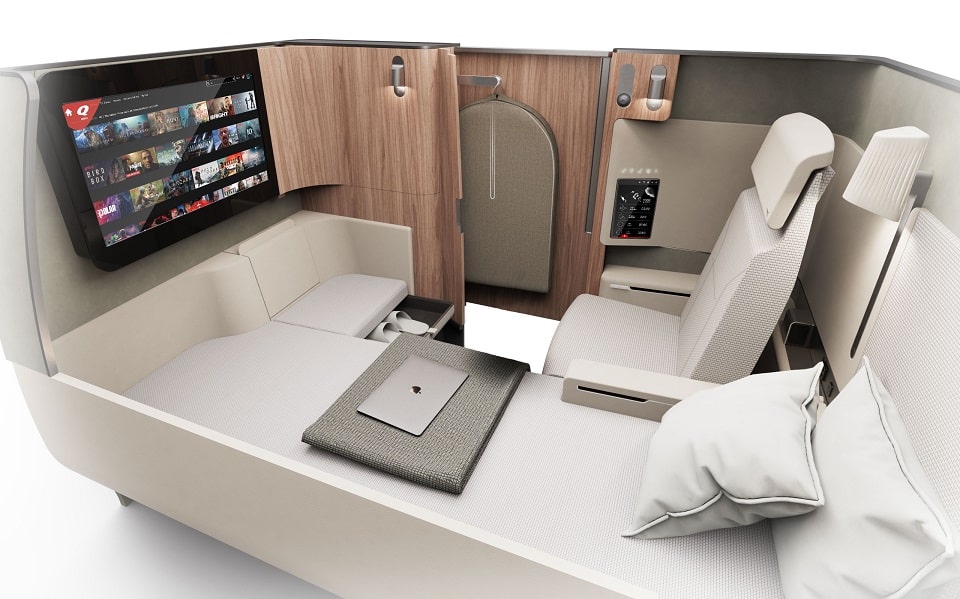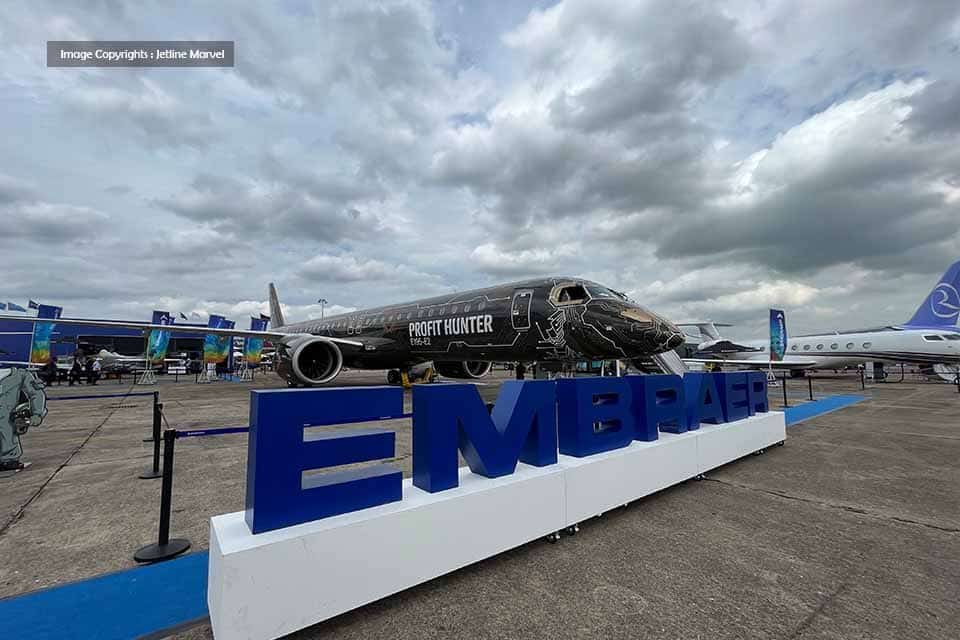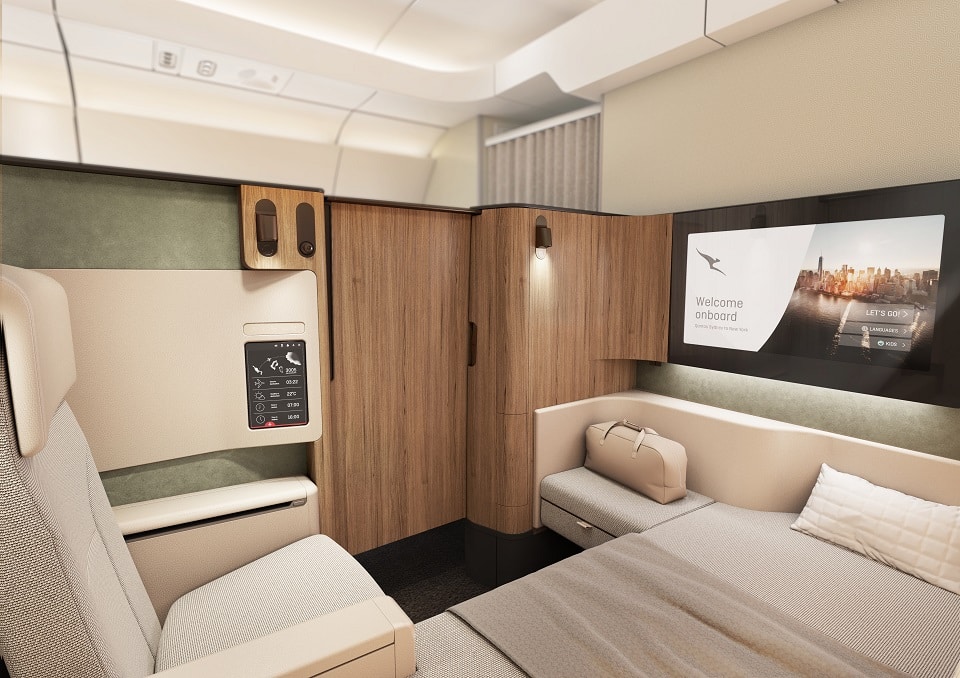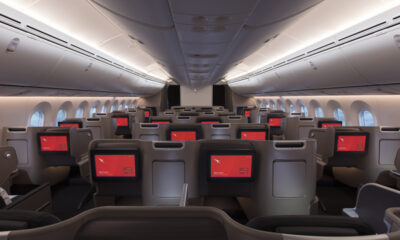Airlines
Qantas unveils ‘Project Sunrise’ first and business class cabins for A350s

- Luxe First suites with fixed flat bed, separate lounge recliner and wardrobe.
- Next Generation Business suites with sliding door for added privacy.
- Fast and free Wi-Fi to be installed across A350 fleet.
Prepare yourself now for a 19-hour nonstop flight. The Qantas airline is ready to fly the longest trip ever. In order to assess the suitability and dependability of the routes and aircraft for Project Sunrise from Australia, Qantas examined many of the test flights.
In order to maximize open legroom and passenger comfort, Qantas reduced the number of seats on the aircraft for the ambitious project in 2022. The cabin of the Airbus A350 plane that will be used for Project Sunrise was revealed by Qantas today.
Qantas has unveiled prototypes of the First Business cabins on the aircraft that will fly passengers non-stop from Australia to New York and London from late 2025.
A virtual reality fly-through of the aircraft cabin has also been revealed. Designed with ultra-long-haul travel in mind, the flagship cabins are the first to be developed from the ground up by a mix of aviation specialists, as well as Australian industrial design studio Caon Design, and a multidisciplinary team of scientists from the University of Sydney’s Charles Perkins Centre including sleep scientists.
QANTAS’ NEW YORK TO SYDNEY NON-STOP RESEARCH FLIGHT SET FOR TAKE-OFF(Opens in a new browser tab)
Key to the cabin design has been giving passengers more space, made possible by Qantas’ decision to configure its 12 Airbus A350s to seat 238 passengers compared to the 300-plus seat layout specified by other carriers.
Every Business suite will have direct aisle access for ease of moving around the cabin, and Qantas is incorporating sliding doors into the suite for privacy, if desired. Other Business features include a two-meter flat bed, generous storage (including a large mirror), cushioned leather ottoman, 18” ultra-high definition touch screen TV, large dining table and feature lighting.
First and Business will also offer multiple personal device charging options including wireless induction charging. The Qantas A350 will offer fast and free high-speed Wi-Fi with partner Viasat following completion of key satellite launches covering the Qantas international network.
Virgin Australia unveils business class suites for A330 fleet.. !!(Opens in a new browser tab)
The aircraft will also feature Bluetooth connectivity allowing all customers to connect their own Bluetooth-enabled headset to the in-flight entertainment system. The Qantas A350 will have six First suites in a 1-1-1 configuration and 52 Business Suites in a 1-2-1 configuration.
It will also feature a Wellbeing Zone for all passengers, which will be unveiled alongside the Premium Economy and Economy cabins in the coming months.

Airlines
A New Player Takes Off: Embraer Poses a Formidable Challenge to Boeing

In the midst of ongoing challenges faced by Boeing and the aviation industry at large, Brazilian aircraft manufacturer Embraer has been thrust into the spotlight.
Recent reports suggesting that Embraer is eyeing the development of a next-generation narrow-body aircraft have sparked intrigue and speculation. However, the company has swiftly moved to quash such rumors.
Internal assessments conducted within Embraer have indeed highlighted the company’s impressive technological prowess and manufacturing capabilities. These findings have led some to speculate about the potential for Embraer to enter the narrow-body aircraft market, traditionally dominated by industry giants Boeing and Airbus.
In light of Boeing’s recent challenges, including the protracted grounding of its 737 MAX jets and leadership upheavals, some industry analysts have suggested that there may be an opportunity for smaller players like Embraer to disrupt the market duopoly. Airbus, too, has plans to introduce a new narrow-body aircraft in the future, further intensifying competition in this space.
However, despite the potential openings created by Boeing’s troubles, Embraer appears cautious about overextending itself. The company is currently focused on maximizing the success of its existing portfolio, which includes the innovative E2 aircraft series.
Additionally, the emergence of alternatives such as China’s Comac C919 adds another layer of complexity to the competitive landscape. While the C919 has thus far secured orders primarily from Asian carriers, Boeing’s challenges could prompt airlines worldwide to explore alternative options.
Airlines
Air India Revised Baggage Rules for Domestic Flights

Air India, one of India’s leading airlines, has implemented significant changes to its baggage policies, affecting travelers across various fare classes.
Effective May 2, 2024, the airline has rolled out a revised baggage allowance scheme, marking a reduction in the permitted weight limits for most fare categories. Under the updated guidelines, passengers booking economy and business class tickets will notice a decrease in their baggage allowance by 5 to 10 kilograms compared to previous allowances.
These adjustments reflect Air India’s response to market dynamics and regulatory requirements. In the Economy Comfort category, encompassing S, T, U, and L fare classes, travelers will now have a baggage allowance of 15 kilograms, down from the previous 20 kilograms. As reported by livefromalounge.
Similarly, passengers availing themselves of Economy Comfort Plus, including G, W, V, Q, and K fare classes, will see their baggage allowance reduced to 15 kilograms from the earlier 25 kilograms.
However, not all fare classes are subject to reductions. Economy Flex passengers, represented by the H, M, B, and Y fare classes, will maintain their previous baggage allowance of 25 kilograms.
In the business class segment, changes are also evident. Business Comfort Plus, consisting of Z and J fare classes, will now offer a baggage allowance of 25 kilograms, down from the prior 35 kilograms. Meanwhile, passengers booking Business Flex tickets under the D and C fare classes will have a revised baggage allowance of 35 kilograms, compared to the previous 40 kilograms.
For passengers planning their upcoming journeys with Air India, it is essential to review the updated baggage policies to ensure compliance and avoid any inconvenience during their travel experience.
Airlines
These are two airlines that placed the largest orders for Comac

China Southern Airlines has made a significant move in the aviation industry by placing a monumental order for 100 Comac C919 aircraft.
Marking a pivotal moment in the commitment of state-owned Chinese airlines to domestically developed planes. The deliveries are set to commence this year and continue until 2031.
The order holds a considerable value of USD 9.9 billion; however, China Southern will benefit from substantial discounts provided by the manufacturer, Commercial Aircraft Corporation of China. This announcement comes closely after Air China’s recent order for 100 C919s, albeit in the Extended Range variant.
China Southern’s decision to invest in the C919 reflects its strategic vision to address capacity demands, achieve fleet balance, and enhance its overall strength and brand image.
By incorporating these advanced aircraft into its operations, the airline aims to alleviate pressure on capacity, optimize its fleet structure, and bolster its competitive position in the market.
As China continues to assert itself in the global aviation industry, the significant orders placed by its state-owned carriers underscore the country’s commitment to domestic aviation manufacturing.
With both China Southern Airlines and Air China making substantial investments in the Comac C919, the stage is set for these domestically developed aircraft to play a pivotal role in shaping the future of Chinese aviation.






























